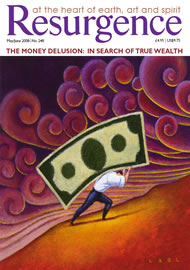Girls in Nepal have no voice. It is all too common for them to be exploited and abused – often by their own family or relatives – in a male-dominated society that does little to protect or promote its female citizens. As a Trustee of Asha-Nepal, a British charity fighting against trafficking and other social crimes against women and girls in Nepal, I wanted to spend some time in the country, to work directly with the girls we’re supporting.
My inspiration was the Oscar-winning documentary film Born into Brothels, about children from Calcutta’s red light district whose lives were transformed through learning photography. Researching other such projects, I saw a common thread – photography could empower the powerless. And so I set up the photo project My World, My View, teaching photography to disadvantaged young people in Nepal.
According to the latest UN data, an estimated 15,000 girls are trafficked each year into prostitution in India and domestic slavery in the Middle East. While the average life expectancy in Nepal is sixty-two, that of girls forced into prostitution is thirty. A third of children over five years old are in child labour. During my ten-month stay in Pokhara, a seven-hour drive from Kathmandu, I saw small girls digging stones and sand from the river bed and carrying heavy loads in doko, a traditional basket with a forehead strap, for little or no pay.
Not only are girls exploited and discriminated against, but their culture expects them to be submissive and effectively gags them. Even at school (which only about half the female population attends) they are not encouraged to develop their own opinions and individuality. A major aim of My World, My View was to encourage girls to express themselves and to gain strength and self-confidence in the process.
The participants were twenty-two girls in the care of SOS (Save our Sisters) Bahini, a Nepali organisation supported by Asha-Nepal, which places endangered girls in family homes with a house mother. All were from poor backgrounds; most have lost one or both parents; one was found in rags, barely able to walk or talk; another was raped by her grandfather. All were leading lives that infringed their rights as children and limited their potential.
And yet they had remarkable resilience. Their underlying joy and humour came bursting to the surface when away from the eye of authority and through their photographs. I was delighted to witness one newcomer, fresh from two years in slave labour, somersaulting down a haystack, shrieking with laughter.
The magic of digital photography is that it’s instant, it’s fun, and anybody can do it, with no special technical skills. Having a camera in their hands gave the girls confidence – and licence – to go places and do things they wouldn’t normally dream of doing. Experimenting with their zoom lenses, they swiftly progressed from their early snaps of friends standing to attention in the distance to wonderfully observed candid portraits, colourful still lifes and reportage.
On a visit to Kathmandu, Parvati, at just seven years old one of the most gifted photographers, went marching up to a policeman to take a close-up shot of his truncheon. Wasn’t she intimidated? “No”, she said. “I asked him to get his arm out of the way.”
The girls built up a vivid portrait of their lives – at home and school, during festivals and on outings, as well as capturing a sense of the hardship they’d endured before coming to SOS Bahini. For Dasain festival, some girls went to visit relatives, taking a cheap compact camera and one black and white film. These grainy pictures are among the most powerful, revealing so much and serving as a prompt for the girls to speak about their former lives.
Last year we held successful exhibitions in Kathmandu, Pokhara and London, and now, thanks to support from the British Council, the girls’ work has been showcased in the book My World, My View, featuring 140 photographs and their moving stories.
The British Ambassador to Nepal, Dr Andrew Hall, says in his Foreword: “I have seen for myself how this project has given [these children] a new sense of self-worth and self-confidence. The photographs are terrific. The girls show a natural feeling for colour and form and composition. And their sheer enjoyment in recording the world around them shines through these pictures.”
Through sales of the book and photos, the girls have earned themselves a share in a nest-egg of more than £10,000, which will help them to be independent in the future. Six of the girls want to be photographers (others want to be doctors, teachers, dancers and cooks). They certainly have the talent, but they will have to keep crashing through the barriers of society to succeed. I’ll be with them all the way.
My World, My View: Photographs by the Girls of SOS Bahini, Pokhara, Nepal (Asha Publications) can be bought online via www.asha-nepal.org, where you can also view and buy the girls’ photos.






